How to Train Teams on AI for Effective Adoption

AI training can sound overwhelming for any team and surveys show that only 12 percent of employees feel confident using AI tools at work. Most companies think the solution is a one-size-fits-all training course. The real edge comes from tailoring every step and meeting your team exactly where they are and that changes how fast people actually learn.
Table of Contents
- Step 1: Assess Your Team’s Current AI Knowledge
- Step 2: Define Clear Training Objectives And Goals
- Step 3: Select Appropriate AI Training Resources And Tools
- Step 4: Implement Hands-On Training Sessions
- Step 5: Evaluate Training Effectiveness And Gather Feedback
Quick Summary
| Key Point | Explanation |
|---|---|
| 1. Assess team’s current AI knowledge | Conduct a comprehensive evaluation to understand the varying levels of AI knowledge within your team. |
| 2. Define measurable training objectives | Create specific, actionable goals that align with your organization’s strategic priorities to ensure effective AI skill development. |
| 3. Select diverse training resources | Curate a blend of learning tools and formats to cater to different learning preferences and enhance the training experience. |
| 4. Implement hands-on training sessions | Design interactive workshops that allow team members to experience real-world AI applications and build practical skills. |
| 5. Evaluate effectiveness and gather feedback | Develop a robust framework for continuous improvement by collecting detailed feedback and measuring training outcomes systematically. |
Step 1: Assess Your Team’s Current AI Knowledge
Understanding your team’s current AI knowledge is the critical first step in creating an effective AI training strategy. This initial assessment provides a clear roadmap for targeted learning and helps prevent overwhelming your team with information they may already understand or are not ready to absorb.
Conducting a Comprehensive Knowledge Evaluation
Begin by designing a multi-dimensional assessment that goes beyond simple technical skills. Your evaluation should explore not just technical understanding, but also psychological readiness and existing comfort levels with artificial intelligence technologies. This holistic approach ensures you capture a nuanced view of your team’s AI preparedness.
Start with an anonymous survey that probes different dimensions of AI knowledge. Ask questions that reveal current familiarity with AI tools, understanding of machine learning concepts, and perceived barriers to adoption. Include scenario-based questions that help you understand how team members might apply AI in their specific roles. For instance, ask them to describe how they imagine AI could solve a current workplace challenge.
Consider creating assessment tiers that categorize team members into knowledge levels: Novice, Intermediate, and Advanced. This classification allows for personalized learning paths. A graphic designer might have different AI skill requirements compared to a data analyst, so your training approach should reflect those nuanced differences.
Tools for Effective Assessment
Utilize online survey platforms like Google Forms or SurveyMonkey to gather comprehensive data. These tools offer anonymity, which encourages honest responses. Include both quantitative multiple-choice questions and qualitative open-ended prompts that allow team members to express their thoughts, concerns, and aspirations regarding AI.
To supplement the survey, conduct optional one-on-one or small group discussions. These conversations can reveal insights that anonymous surveys might miss. Watch for emotional responses, hesitations, and genuine curiosity about AI technologies. These interactions will help you understand not just what your team knows, but how they feel about potentially integrating AI into their workflow.
Once you have gathered and analyzed the data, you’ll have a clear picture of your team’s current AI landscape. This assessment becomes the foundation for a customized, strategic training approach that meets your team exactly where they are in their AI journey.

Read more about creating personalized AI learning strategies to ensure your team feels supported and empowered throughout their AI adoption process.
Step 2: Define Clear Training Objectives and Goals
Transforming your team’s AI knowledge requires more than good intentions. Precise, measurable training objectives are the blueprint that transforms potential into actual capability. This step bridges the gap between your initial knowledge assessment and a strategic learning roadmap tailored specifically to your organization’s unique needs.
Start by translating your assessment insights into specific, actionable goals. These objectives should not be generic tech training modules but carefully crafted learning pathways that directly connect to your business outcomes. Consider your organization’s strategic priorities. Are you looking to improve customer service efficiency? Streamline data analysis? Enhance product development processes? Each goal requires a nuanced approach.
Develop objectives that are SMART: Specific, Measurable, Achievable, Relevant, and Time-bound. For example, instead of a vague goal like “learn AI,” create a targeted objective such as “Train 75% of customer service team to use AI chatbot technologies effectively within three months, reducing response times by 40%.” This approach provides clear direction and allows for precise tracking of learning progress.

Your training objectives should encompass multiple dimensions beyond technical skill acquisition. Explore our guide on owner-led AI adoption strategies to understand the holistic approach needed. Include goals that address psychological readiness, ethical considerations, and practical application. This means designing learning paths that not only teach technical skills but also build confidence and strategic thinking around AI technologies.
Consider creating a tiered objective framework that acknowledges different learning speeds and roles within your organization. Entry-level employees might start with foundational AI literacy, while mid-level managers could focus on strategic implementation, and technical teams dive into advanced machine learning concepts. This nuanced approach ensures that every team member feels supported and challenged appropriately.
Each objective should have clear key performance indicators (KPIs) that allow you to measure success objectively. These might include metrics like completed training modules, practical project applications, confidence self-assessments, and tangible business improvements resulting from AI skill development. By establishing these metrics upfront, you create accountability and provide motivation for your team.
Remember that AI training objectives are not static documents but living strategies. Build flexibility into your plan, allowing for adjustments based on team feedback, technological changes, and emerging business needs. Your goals should evolve as your team’s AI competence grows, creating a dynamic, responsive learning environment that keeps pace with rapid technological advancements.
This table provides an example of tiered training objectives for different team roles, illustrating how learning outcomes and focus areas can be tailored within an organization.
| Role | Training Objective Example | Focus Area |
|---|---|---|
| Entry-Level Staff | Achieve foundational AI literacy within 4 weeks | Basic concepts and terminology |
| Mid-Level Manager | Integrate AI tools to improve process efficiency in 2 months | Strategic implementation |
| Technical Team | Master advanced machine learning models by quarter end | Technical skill acquisition |
| Customer Service | Use AI chatbot to reduce response times by 40% in 3 months | Practical AI tool proficiency |
| Marketing Team | Apply AI analytics to campaign optimization | Data-driven decision making |
Step 3: Select Appropriate AI Training Resources and Tools
Selecting the right AI training resources is a critical step that transforms theoretical knowledge into practical, actionable skills. Your chosen resources must align precisely with your team’s current knowledge levels, learning styles, and organizational objectives.
Curating a Comprehensive Learning Ecosystem
Begin by creating a diverse learning portfolio that addresses multiple learning preferences. Some team members thrive with interactive online courses, while others prefer hands-on workshops or self-paced video tutorials. Explore strategic AI adoption approaches that emphasize personalized learning pathways.
Consider a mix of training resources that includes professional online learning platforms like Coursera and LinkedIn Learning, which offer specialized AI and machine learning courses. Look for platforms that provide certification programs, as these can serve dual purposes of skill development and professional credentialing. Udacity and edX also offer comprehensive AI learning tracks that range from beginner to advanced levels.
Practical Implementation and Skill Validation
Beyond traditional online courses, integrate practical training tools that allow immediate application. Platforms like Kaggle provide real-world data science challenges that enable team members to practice AI skills in simulated environments. GitHub repositories with open-source AI projects can offer additional hands-on learning opportunities, allowing your team to examine and contribute to actual AI implementations.
Create internal mentorship programs where team members with more advanced AI skills can guide and support those at earlier stages of their learning journey. This approach not only accelerates skill transfer but also builds a collaborative learning culture that makes AI adoption feel less intimidating.
Evaluate each training resource against strict criteria. The ideal tools should offer clear learning paths, practical skill demonstrations, and measurable progress tracking. Look for resources that provide not just technical instruction, but also context about AI’s strategic business applications. Your goal is to develop AI-literate team members who understand both the technical mechanics and the broader strategic implications of artificial intelligence.
Remember that training is an ongoing process. Build flexibility into your resource selection, allowing for regular updates and adjustments as AI technologies continue to evolve. The most successful AI training programs are those that remain adaptive, responsive, and aligned with both technological advancements and your organization’s specific strategic objectives.
Below is a table summarizing common AI training resources and tools mentioned in the guide, along with their type and learning application.
| Resource/Tool | Type | Learning Application |
|---|---|---|
| Coursera | Online Course Platform | Structured courses and certification |
| LinkedIn Learning | Online Course Platform | Professional skill development |
| Udacity | Online Course Platform | Comprehensive AI learning tracks |
| edX | Online Course Platform | Beginner to advanced AI courses |
| Kaggle | Hands-On Practice Platform | Real-world data science challenges |
| GitHub | Open-Source Repository | Examining and contributing to AI projects |
| Internal Mentorship | Peer Learning Program | Guided skill transfer and support |
| Google Forms | Survey Tool | Team knowledge and readiness assessments |
| SurveyMonkey | Survey Tool | Gathering quantitative and qualitative data |
Step 4: Implement Hands-On Training Sessions
Transitioning from theoretical knowledge to practical skill application requires immersive, interactive training sessions that place your team directly into real-world AI scenarios. These hands-on experiences transform abstract concepts into tangible capabilities, building confidence and competence simultaneously.
Designing Interactive Learning Environments
Craft training sessions that simulate actual workplace challenges where AI can provide meaningful solutions. Instead of traditional lecture-style presentations, create workshop environments where team members actively engage with AI tools, experiment with machine learning algorithms, and solve practical problems relevant to their specific roles. Learn more about strategic AI implementation approaches that emphasize experiential learning.
Structure your training around scenario-based learning modules that mirror real organizational challenges. For a marketing team, this might involve using AI tools to analyze customer sentiment or generate predictive engagement metrics. For a finance department, training could focus on AI-powered risk assessment and forecasting models. By anchoring learning in familiar contexts, you make AI feel less intimidating and more like a powerful professional tool.
Ensure each training session includes a critical balance of guided instruction and independent exploration. Begin with a structured demonstration where an expert facilitator walks through specific AI tool functionalities, then transition into hands-on experimentation periods. During these independent segments, team members should feel empowered to test boundaries, make mistakes, and discover AI capabilities through active exploration.
Consider implementing a collaborative learning approach that encourages peer-to-peer knowledge sharing. Group exercises where team members work together to solve AI-related challenges can accelerate learning and reduce individual performance anxiety. These collaborative environments help normalize the learning process, making AI skill development feel like a shared organizational journey rather than an individual burden.
Integrate immediate feedback mechanisms into your training sessions. Use real-time performance assessments, quick reflection exercises, and interactive Q&A segments to help participants process and internalize their learning. Encourage participants to document their discoveries, challenges, and insights, creating a living knowledge repository that can inform future training iterations.
Remember that successful hands-on training goes beyond technical skill acquisition. Your sessions should cultivate a curiosity-driven mindset that views AI as an evolving, collaborative technology. Create an environment where asking questions, expressing uncertainties, and sharing unexpected discoveries are celebrated. This approach transforms training from a mandatory exercise into an exciting opportunity for professional growth and innovation.
Step 5: Evaluate Training Effectiveness and Gather Feedback
Evaluating your AI training program is not a mere administrative checkbox but a critical process of continuous improvement. Systematic feedback collection transforms your training from a static experience into a dynamic, responsive learning ecosystem that adapts to your team’s evolving needs.
Develop a comprehensive evaluation framework that goes beyond traditional metrics. Instead of simply measuring completion rates, design assessment tools that capture nuanced insights about skill acquisition, psychological readiness, and practical application. Create surveys and assessment protocols that probe not just technical comprehension, but also team members’ confidence levels, perceived barriers, and excitement about implementing AI technologies.
Implement multi-dimensional assessment strategies that capture both quantitative and qualitative data. Utilize anonymous online surveys, one-on-one interviews, and performance tracking tools to gather holistic feedback. Learn more about strategic AI adoption approaches that emphasize continuous learning and adaptation.
According to learning analytics research, tracking individual and collective progress requires sophisticated measurement techniques. Design assessment frameworks that include practical skill demonstrations, scenario-based problem-solving exercises, and real-world project evaluations. These methods provide more meaningful insights than traditional multiple-choice tests.
Establish clear key performance indicators (KPIs) that measure training effectiveness across different dimensions. These might include metrics like AI tool proficiency, speed of task completion, innovation generated from AI-powered solutions, and team members’ self-reported confidence levels. By creating a holistic scoring system, you capture the full spectrum of learning outcomes.
Encourage a culture of radical transparency during the feedback process. Create safe spaces where team members can share genuine experiences, including challenges and moments of uncertainty. This approach transforms evaluation from a potentially threatening experience into an opportunity for collaborative growth. Build mechanisms that not only collect feedback but visibly demonstrate how that feedback drives future training improvements.
Remember that evaluation is an ongoing dialogue, not a one-time event. Design your feedback mechanisms to be iterative and adaptive. Each training cycle should inform and refine the next, creating a continuous improvement loop that keeps your AI education strategy agile and responsive to technological advancements and organizational needs.
Empower Your Team’s AI Learning Journey with Trusted Expertise
Struggling to turn theoretical AI training into practical, business-driving results? If you feel overwhelmed trying to assess skills, set clear objectives, and make AI adoption less intimidating, know that you are not alone. Many organizations face uncertainty about how to create personalized, measurable learning pathways or how to turn hands-on training into real innovation. Your team’s confidence and readiness depend on a strategic, leadership-driven approach—one where expertise and support make all the difference.

Experience the advantage of a partner who specializes in building tailored AI solutions for growing companies. At Average Robot, you benefit from 25 years of hands-on global expertise and a proven process that moves teams step by step from assessment to implementation. Our strategic AI adoption guidance helps you put powerful tools in your team’s hands with the confidence and agility the market demands. Start now and transform your curiosity into business results. Visit Average Robot to connect with our experts and unlock the full value of AI for your business today.
Frequently Asked Questions
How do I assess my team’s current AI knowledge?
Begin by designing a comprehensive evaluation that includes anonymous surveys and discussions to gauge technical skills, psychological readiness, and comfort levels with AI technologies.
What are SMART objectives in AI training?
SMART objectives are Specific, Measurable, Achievable, Relevant, and Time-bound goals that provide clear direction for training programs. For example, a goal could be to train 75% of the customer service team to effectively use AI chatbot technologies within three months.
What are some effective AI training resources?
Consider a mix of professional online learning platforms like Coursera and LinkedIn Learning, practical tools like Kaggle for hands-on challenges, and internal mentorship programs to enhance skill transfer and confidence.
How can I evaluate the effectiveness of AI training?
Use a combination of quantitative and qualitative feedback methods such as surveys, performance tracking, and practical skill demonstrations. Establish key performance indicators (KPIs) that measure proficiency, task completion speed, and team confidence.
Recommended
- Owner-Led AI Adoption Tips for Small Businesses — Average Robot
- Owner-Led AI Adoption Tips for Small Businesses — Average Robot
- About | Discover Opportunities - Schedule Today — Average Robot
- About | Discover Opportunities - Schedule Today — Average Robot
- The Impact of AI on SEO in 2025: Key Changes for Businesses




